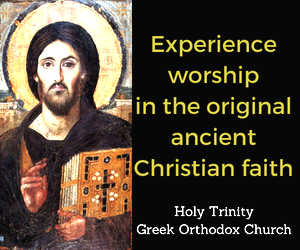By Mark Azzara
Dear Friend,
Like most of you I was highly interested in the fire that recently gutted Notre Dame Cathedral in Paris. But I was even more fascinated – you might even say flabbergasted – by the response to the fire.
I was dumbfounded while listening to Judy Woodruff, the host of the PBS News Hour, as she tried to find words to mourn the loss of the artworks and architecture. She completely missed the point of what was going on, and I suspect she wasn’t alone.
Yes, the church has jaw-dropping stained-glass windows and other great works of art. Yes, it is perhaps the most important tourist attraction in Paris, aside from the Eiffel Tower. Yes, it is an architectural masterpiece. But it wasn’t built for any of those reasons.
Notre Dame Cathedral was built as a place where we worship Jesus Christ. Catholics believe Jesus is fully present in the Eucharist and is housed between Masses in the tabernacle. All this hand-wringing over the rescue of artifacts just emphasized how brain-dead the commentators were because nobody made a to-do about rescuing the Eucharist.
But even as a place of worship, Notre Dame is just a building. A finite piece of our finite world. Only Jesus Christ, unlike that church and its contents, is eternal. Notre Dame is like hundreds, maybe thousands, of other churches – some great, some not – that have burned to the ground over the centuries. Some were rebuilt, some not. Sometimes great artworks and architecture were lost. But we have survived. And we will survive this, too.
I have visited churches that are tourist attractions. The small, still-active Catholic Church on Olvera Street in Los Angeles is the city’s oldest church. It also is so great a tourist attraction that, when I was there last, I saw a sign reminding people that the church is a place of worship, not a place to snap cheesy photos, chat or eat Cheetos. And some of the visitors to Notre Dame Basilica in Montreal were equally clueless on the day I visited.
The great churches of the world are open to the public as a way of inspiring visitors to appreciate God in a deeper way, or perhaps to plant within them the seed of belief in him. Those churches aren’t there to cater to boors and the clueless like Judy Woodruff. I even wonder if God might be smiling a bit at the destruction because he is so tired of seeing people worship the art rather than him.
The fire at Notre Dame in Paris is a blessing to the extent that it reminds people what the true purpose of a church is. Even the artworks speak to that purpose – the love of God that inspired the artists to create those masterworks in the first place.
Those artworks weren’t meant for gawkers. They were intended to help often-illiterate worshipers come closer to God by reminding them visually of the Bible stories they heard proclaimed from the pulpit and the great saints whose lives epitomized true faith.
If visitors were to understand that the reason they are welcome in those churches is so that they can see the invisible God reflected in the visible art I wonder how many people would even bother to enter.
The message of that great fire is simple. God is saying, “The building may be gone but I’m still here – if you’re interested.”
All God’s blessings – Mark






